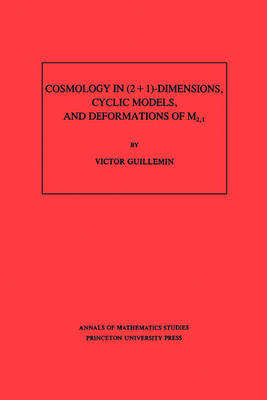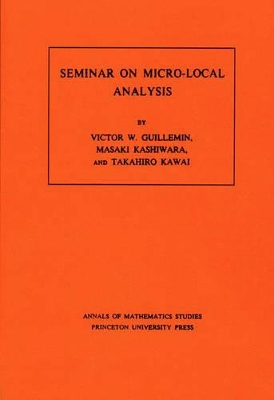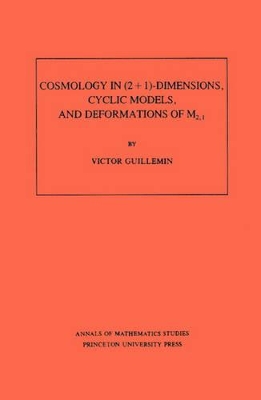Annals of Mathematics Studies
3 primary works • 6 total works
Book 93
Seminar on Micro-Local Analysis. (AM-93)
by Victor Guillemin, Masaki Kashiwara, and Takahiro Kawai
Published 2 March 2016
Book 99
The Spectral Theory of Toeplitz Operators. (AM-99)
by L. Boutet de Monvel and Victor Guillemin
Published 2 March 2016
Book 121
Cosmology in (2 + 1) -Dimensions, Cyclic Models, and Deformations of M2,1. (AM-121)
by Victor Guillemin
Published 2 March 2016
The Spectral Theory of Toeplitz Operators. (AM-99), Volume 99
by L. Boutet de Monvel and Victor Guillemin
Published 21 August 1981
The theory of Toeplitz operators has come to resemble more and more in recent years the classical theory of pseudodifferential operators. For instance, Toeplitz operators possess a symbolic calculus analogous to the usual symbolic calculus, and by symbolic means one can construct parametrices for Toeplitz operators and create new Toeplitz operators out of old ones by functional operations. If P is a self-adjoint pseudodifferential operator on a compact manifold with an elliptic symbol that is of order greater than zero, then it has a discrete spectrum. Also, it is well known that the asymptotic behavior of its eigenvalues is closely related to the behavior of the bicharacteristic flow generated by its symbol. It is natural to ask if similar results are true for Toeplitz operators. In the course of answering this question, the authors explore in depth the analogies between Toeplitz operators and pseudodifferential operators and show that both can be viewed as the "quantized" objects associated with functions on compact contact manifolds.
Seminar on Micro-Local Analysis. (AM-93), Volume 93
by Victor Guillemin, Masaki Kashiwara, and Takahiro Kawai
Published 21 November 1979
Based on a seminar sponsored by the Institute for Advanced Study in 1977-1978, this set of papers introduces micro-local analysis concisely and clearly to mathematicians with an analytical background. The papers treat the theory of microfunctions and applications such as boundary values of elliptic partial differential equations, propagation of singularities in the vicinity of degenerate characteristics, holonomic systems, Feynman integrals from the hyperfunction point of view, and harmonic analysis on Lie groups.
Cosmology in (2 + 1) -Dimensions, Cyclic Models, and Deformations of M2,1
by Victor Guillemin
Published 21 March 1989
The subject matter of this work is an area of Lorentzian geometry which has not been heretofore much investigated: Do there exist Lorentzian manifolds all of whose light-like geodesics are periodic? A surprising fact is that such manifolds exist in abundance in (2 + 1)-dimensions (though in higher dimensions they are quite rare). This book is concerned with the deformation theory of M2,1 (which furnishes almost all the known examples of these objects). It also has a section describing conformal invariants of these objects, the most interesting being the determinant of a two dimensional "Floquet operator," invented by Paneitz and Segal.





